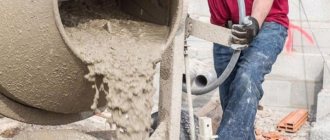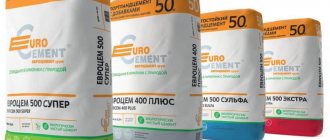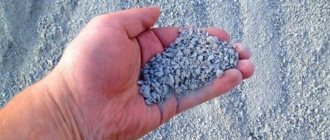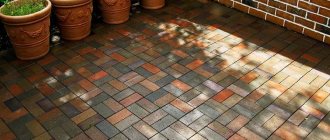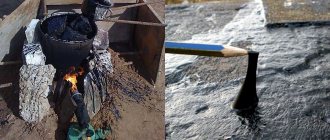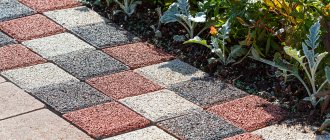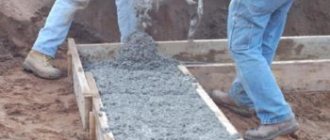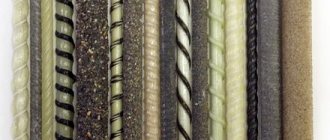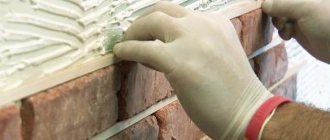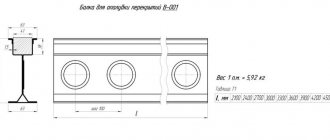Probably every person has encountered construction or finishing work at least once in his life. Or at least watched it happen.
Every person knows that any construction process involves working with white cement.
The use of this composition is widespread in construction, in the creation of sculptures and various architectural forms. When a person talks about cement, he imagines a gray homogeneous mass.
Indeed, previously this material had only this color. But modern markets are now filled with a brand of cement that is beautifully white. It refers to a composition distinguished by its characteristics and aesthetic properties.
In addition to being used as an individual material, it can be added to various other formulations. You just need to take into account some features associated with working with white cement.
Main characteristics
White cement
White cement is a light-colored powder.
When it comes into contact with liquid, it becomes solid, so it is quite durable.
It is identical to ordinary cement, but is produced using a special technology using some additives.
They are what give the material its white color.
Additionally, this material has high atmospheric resistance. Therefore, it is a fairly durable material.
The composition of white cement includes:
- white clinker
- gypsum
- active mineral supplement
Gas technology is often used to bleach clinker. It is based on reducing the degree of oxidation of dyes.
The main parameters of white cement are:
- whiteness – 85%
- sediment up to 0.12%
- the material reaches a hardness of 65% after just 15 hours
- cement has compressive strength: in three days - 38 MPa
- frost resistance of the material is 100 cycles
Frost and moisture resistance allow the use of cement under the most negative atmospheric conditions. At the same time, it will not crack, crumble or break off.
White cement powder
Pure color and good structure are achieved due to the use of special raw materials and innovative technologies.
All substances that make up the material contain a small amount of iron oxides and pigment inclusions.
Clinker must be calcined.
Then it must be cooled. Such actions increase the durability and frost resistance of the resulting cement.
To make the color of the material whiter, the clinker is treated with water. This procedure enhances the color.
Thanks to this, the latest brands of cement look quite beautiful in the sun. But this material has a high cost, so it is problematic to purchase. However, white cement is widely used in construction. The use of the material at home is just beginning to find its place.
History of cement
Attempts to overcome the low water resistance of lime and gypsum compositions have been made since ancient times. Cement (caementum translated from Latin - crushed, broken stone) appeared by adding various mineral substances that had hydrophobic properties to lime. For this purpose, crushed remains of baked clay bricks and various volcanic rocks were used. Thus, the cement used by the builders of Ancient Rome included pozzolans - deposits of the ash of the famous volcano Vesuvius.
Experiments continued for many centuries, until the need for a large amount of durable and inexpensive binder forced builders to develop the optimal technology for its production. Decisive contributions to such research were made by the Russian military technician Yegor Cheliev, who published a book on cement for underwater work (1825), and the mason from Leeds, England, John Aspdin, who received a patent for Portland cement (1824).
This name comes from the English island of Portland, located in the English Channel and consisting of limestone rocks. Stones from a quarry located on this island were considered the most prestigious building material in England. The artificial stone Aspdin obtained was very similar to it in color and strength.
It is interesting that Cheliev’s technology is more consistent with what is now called Portland cement, and Aspdin’s cement was produced without the now accepted sintering of the feedstock.
Advantages
This material has recently entered the construction market, but has already established itself as one of the most popular compositions. White cement has many advantages:
- Excellent strength and ability to harden quickly. After just sixteen hours, the hardness of the material is sixty percent. Therefore, the duration of the construction procedure is reduced and, accordingly, simplified.
- Does not collapse when interacting with aggressive solutions and atmospheric moisture.
- Environmentally friendly material, harmless to humans.
- Buildings made from this material are very stable and durable.
- Complete absence of cracks and chips, which minimizes repair costs.
- The presence of color fastness and the aesthetics of whiteness, which makes it possible to combine cement with other materials.
- A multifunctional composition that can be used both in construction and repair work, and in the manufacture of architectural sculptures.
- The material is widely used in the manufacture of brick, concrete, grout and other similar compositions.
This type of cement is a fairly practical building composition. Buildings built with its help will not shrink significantly. You can also see that they do not crumble. But this material also has disadvantages.
These include the need for increased attention. When working with this material, certain rules must be followed. Another disadvantage is the high cost of the material. But it is worth noting that high-quality materials are always not cheap. And if you take into account the duration of use and durability, this is a pretty profitable material.
“Dry” and “wet” method
There are two ways to obtain the desired state of the mixture: “dry” and “wet”. If the moisture content of the components is high, clay and soft limestone (chalk) are dissolved in water, then water is removed from this suspension, called raw sludge, by strong heating (evaporation). The result is a uniform, finely ground mixture. A more economical method is “dry”, where there is no stage of bringing the sludge to a boil, and the mixture is crushed mechanically.
Next, in rotating kilns - cylinders with a diameter of about 5 m, a length of about 200 m, with a slope for moving the raw material mass during the firing process, clinker is formed - rounded granules that appear during the sintering of the mixture at a temperature of 1450 ⁰C as a result of physical and chemical interactions.
The clinker is cooled and aged for up to two weeks before the final operation - joint grinding with a certain amount of gypsum, which is added to slow down the setting process. Here the composition of the cement is finally formed, at the same stage various mineral additives are introduced, giving the binder the necessary specific properties.
Features of use
Sometimes people use white cement for finishing work. Application, how to knead it, does not cause any particular difficulties.
How to dilute white cement
White cement is diluted identically to ordinary material. But, when working with it, you should take into account several features:
- The tools must be perfectly clean, otherwise the color will turn out dirty. This applies not only to dirt, but also to rust or mold.
- All containers must also be used only in a clean condition. The same applies to the surfaces to be coated with the material. Otherwise, the desired effect will not be obtained. The cement will become stained and stained.
- Applying cement to surfaces with mold and rust should not be allowed, since the work will be done with a light-colored mixture. As a result, all the work will go nowhere. In any case, the color scheme will be disrupted, not to mention the appearance of various stains on the surface.
- Sometimes fillers and other compounds are used in the work procedure. Their color should be extremely light. It is strictly not recommended to add clay or anything like that. Otherwise, the purpose of this material is simply lost.
- If cement is applied to metal surfaces, they must first be treated and protected with anti-corrosion agents. The thickness of white cement should not exceed three centimeters.
- White cement has decorative value, so it should only be diluted with clean liquid.
If a person adheres to all of the above rules for working with white cement, he will always be satisfied with the result of his work.
What is the composition of the material?
The main feature of cement is the raw materials used. It contains a small amount of ferrous compounds. White cement clinker uses low levels of manganese and chromium. Its crushing and grinding takes place in special machines. they are called crushers or mills. They are equipped with special linings. The process uses silicon. basalt, porcelain slabs.
The grinding fineness here is much lower than that of gray cement.
- gray cement - 3.5 thousand cm2/g;
- white - 4.5 thousand cm2/g.
When firing the mixture, liquid or gaseous fuel is used, which does not leave soot or ash. This has a positive effect on the quality of reliability and strength.
The clinker is hardened and fired at a temperature of 1200°C. It is then cooled to 200°C. In this case, the temperature decrease occurs in an oxygen-free environment. There are methods when cooling is carried out using water. In this case, the initial temperature is about 1500°C, and it drops to 500°C. After this comes the drying stage in a special drum. the material is in it at a temperature of 300°C.
- Dry hardening method. This method of clinker processing is used with minimal raw material moisture. Enterprises use shaft furnaces, which also include a fine grinding stage. They also thoroughly mix and dry all components. When the clinker reaches the desired fraction, it is fired at a temperature of 800°C.
- Wet method. This method involves crushing the hard fractions in a mill, and the soft ones in a mash using water. After the initial grinding, you need to dry the wet fraction and send it to a smaller fracture. Then the clinker is mixed with the remaining components.
Here are the features of the final product:
- The grinding of white cement is very fine. When sifting through sieve No. 008, no more than 12% of the volume will remain.
- The whiteness of the material determines its decorative properties. There are 3 grades of white cement. The first has 80% reflection, the second 75%, the third 68%.
- A solution created on the basis of such cement sets within 45 minutes. Complete hardening occurs after 12 hours.
- Colored clinker cement is produced using mineral additives. By adding a certain substance, you can get the following colors: pistachio (eskolaite), brown (cobalt), blue - black (manganese). It is also possible to use dyes, as with ordinary cement.
When producing white cement, it is important to strictly control the process, proportions and technical requirements. conditions. In this case, you will be able to make really high-quality material.
Scope of application
This material is used for decorative and industrial purposes. After all, the basis for the production of adhesives and grouting compounds is white cement.
It is used in road markings because it has reflective properties. And even this is not the last area of its application.
For private use, due to its whiteness, this material is purchased for the following purposes:
- Facade finishing. It remains in its original form for a long time. Also, the surface will not fade in direct sunlight.
- Independent production of grouts, plaster and the like.
- Recreation of decorative structures. For example, steps, sculptures and architectural works. Therefore, this material is used not only for industrial purposes, but also at home, in most cases on personal plots.
- Basically, white cement is used for the manufacture of decorative elements and decoration of existing surfaces. With its help you can recreate beautiful surfaces of various textures.
This is a material with increased strength, which has a huge range of applications in various fields. Its main advantage is its long service life. That is why it is widely used and has already established itself as one of the most popular materials.
Potential demand for white cement
– White cement is not a finished product ready for use in its pure form. This is a raw material component used for the production of various types of building materials ,” notes Svetlana Savkina, head of research and development of JSC Holcim Rus Ltd. – The main consumers of white cement on the Russian market are manufacturers of dry construction mixtures: finishing putties and plasters for interior and exterior work, colored masonry mortars, self-leveling floor mortars and construction chemicals (tile adhesives and grout). This material is also widely used by manufacturers of small-piece concrete products: artificial stone, facing bricks, terrazzo floor slabs, paving stones and curb stones, as well as landscape design elements.
“So far, white cement is not in great demand among Russian architects, designers and builders,” says Andrey Andreev, General Director of Alborg White LLC. – The share of this material in the Russian cement market is about 1%, while in Western countries it reaches 10–15%.
“The market potential is huge,” Andrey Andreev is sure. – This year alone we can expect at least 20 percent growth in the entire cement market. In addition, the white cement segment in the total market volume will also increase. For example, due to the growing use of paving slabs, manufacturers of these products will gradually begin to switch from gray to white cement, thereby achieving increased strength and aesthetic qualities. As a result, the share of white cement will be 10–15% of the total cement market, as in European countries.
What to consider when mixing the composition
White cement must be mixed under specific conditions. It will change properties upon close contact with fat. That is why, when mixing material, you need to take clean tools and containers. In addition, it is recommended to degrease them before use. Metal surfaces must be treated with anti-corrosion compounds. They are applied in a thin layer. Otherwise, the resulting rust will penetrate the concrete structure and will be visible from the outside. Of course, this will not happen immediately, but after some period of time it will definitely happen.
Otherwise, this type of cement is identical to conventional material. You can easily prepare it yourself. Clean river sand can be used to fill the cement.
To produce the composition, standard doses are required: one to three. Mixing this composition will not cause any particular difficulties even for the most inexperienced person. You don't need any special skill here either.
